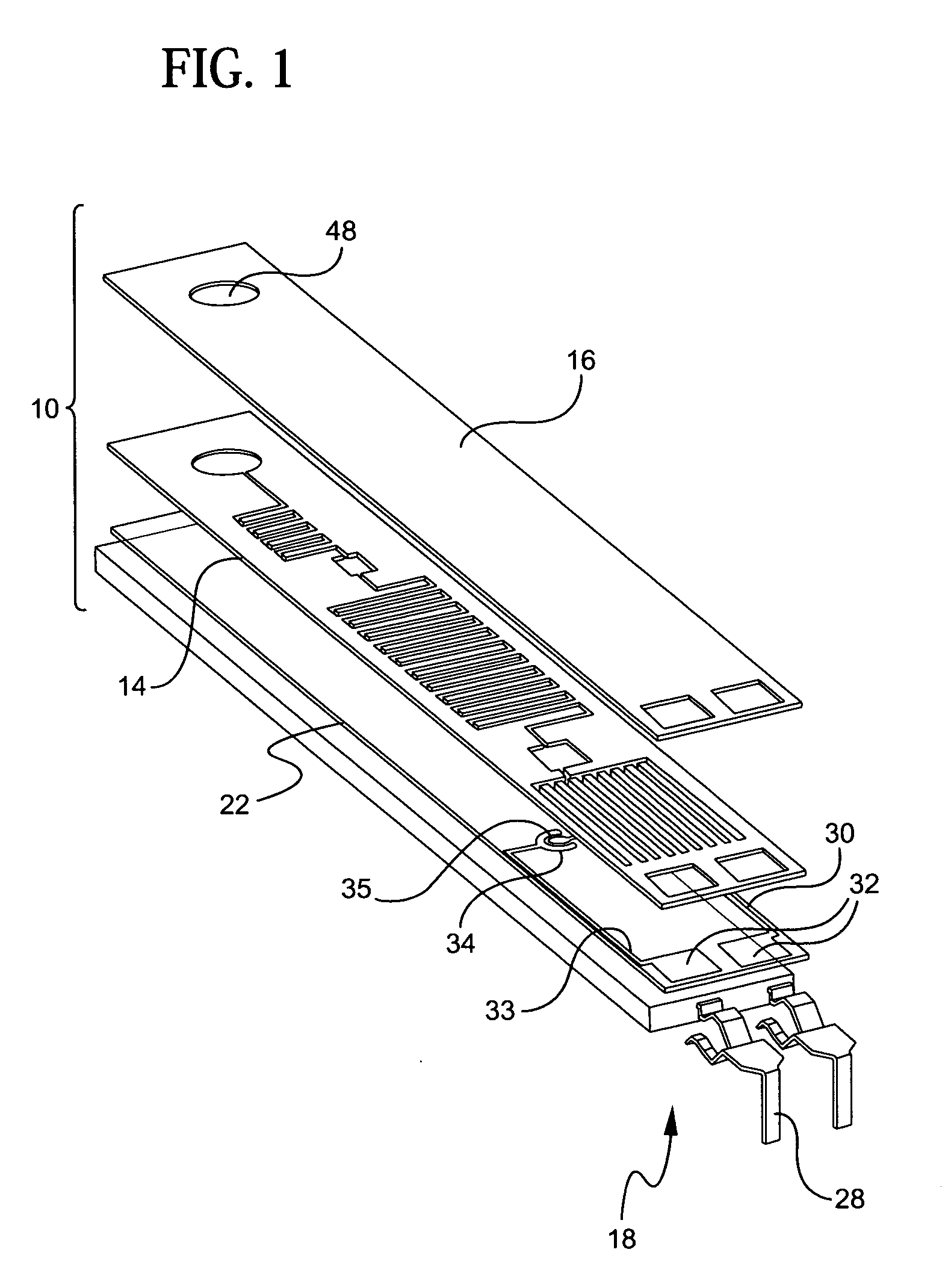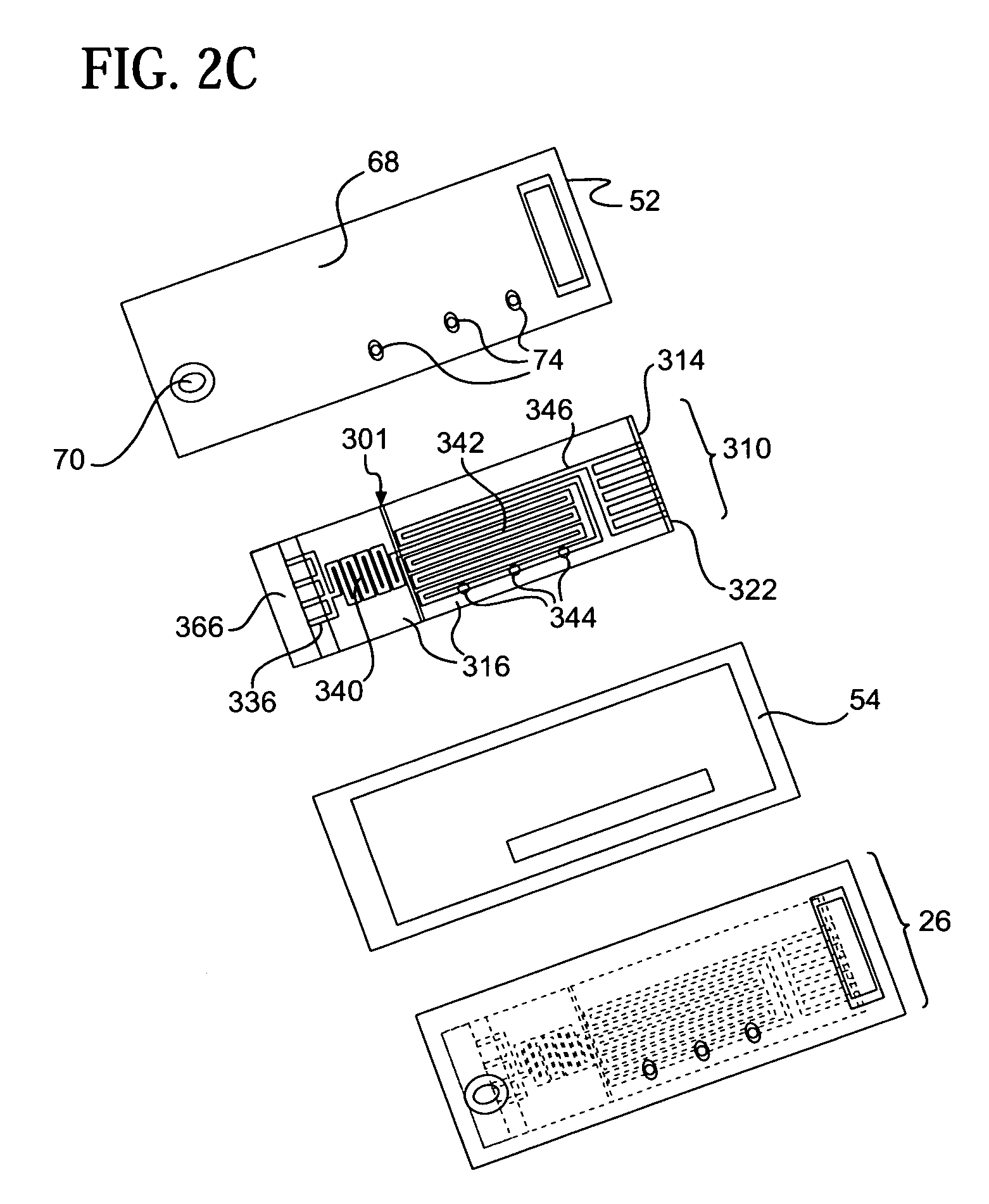Microfluidic devices and methods of preparing and using the same
- Summary
- Abstract
- Description
- Claims
- Application Information
AI Technical Summary
Benefits of technology
Problems solved by technology
Method used
Image
Examples
Embodiment Construction
[0053]Referring to the accompanying drawings wherein like reference numbers refer to the same or similar elements, an embodiment of a microfluidic device in accordance with the invention is shown in FIG. 1 and designated generally as 10. Microfluidic device 10 includes a support 22, a photoresist layer 14 arranged above the support 22, a cover layer 16 arranged above the photoresist layer 14 and an electrical interconnection unit 18 arranged in connection with the support 22.
[0054]Support 22 forms or is part of a support structure for microfluidic device 10 which can take any form which provides a preferably rigid underlying substrate for the photoresist layer 14. The support structure can include a base, a substrate, and a layer of material, either alone or various combinations thereof. In the illustrated embodiment, the support structure includes a rigid backing substrate 20 which provides strength and rigidity to the microfluidic device 10 and the support 22 which is a first PET ...
PUM
 Login to View More
Login to View More Abstract
Description
Claims
Application Information
 Login to View More
Login to View More - R&D
- Intellectual Property
- Life Sciences
- Materials
- Tech Scout
- Unparalleled Data Quality
- Higher Quality Content
- 60% Fewer Hallucinations
Browse by: Latest US Patents, China's latest patents, Technical Efficacy Thesaurus, Application Domain, Technology Topic, Popular Technical Reports.
© 2025 PatSnap. All rights reserved.Legal|Privacy policy|Modern Slavery Act Transparency Statement|Sitemap|About US| Contact US: help@patsnap.com



